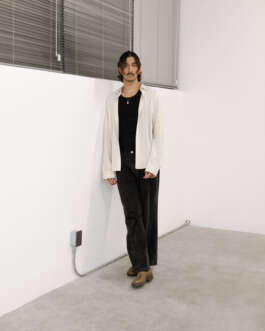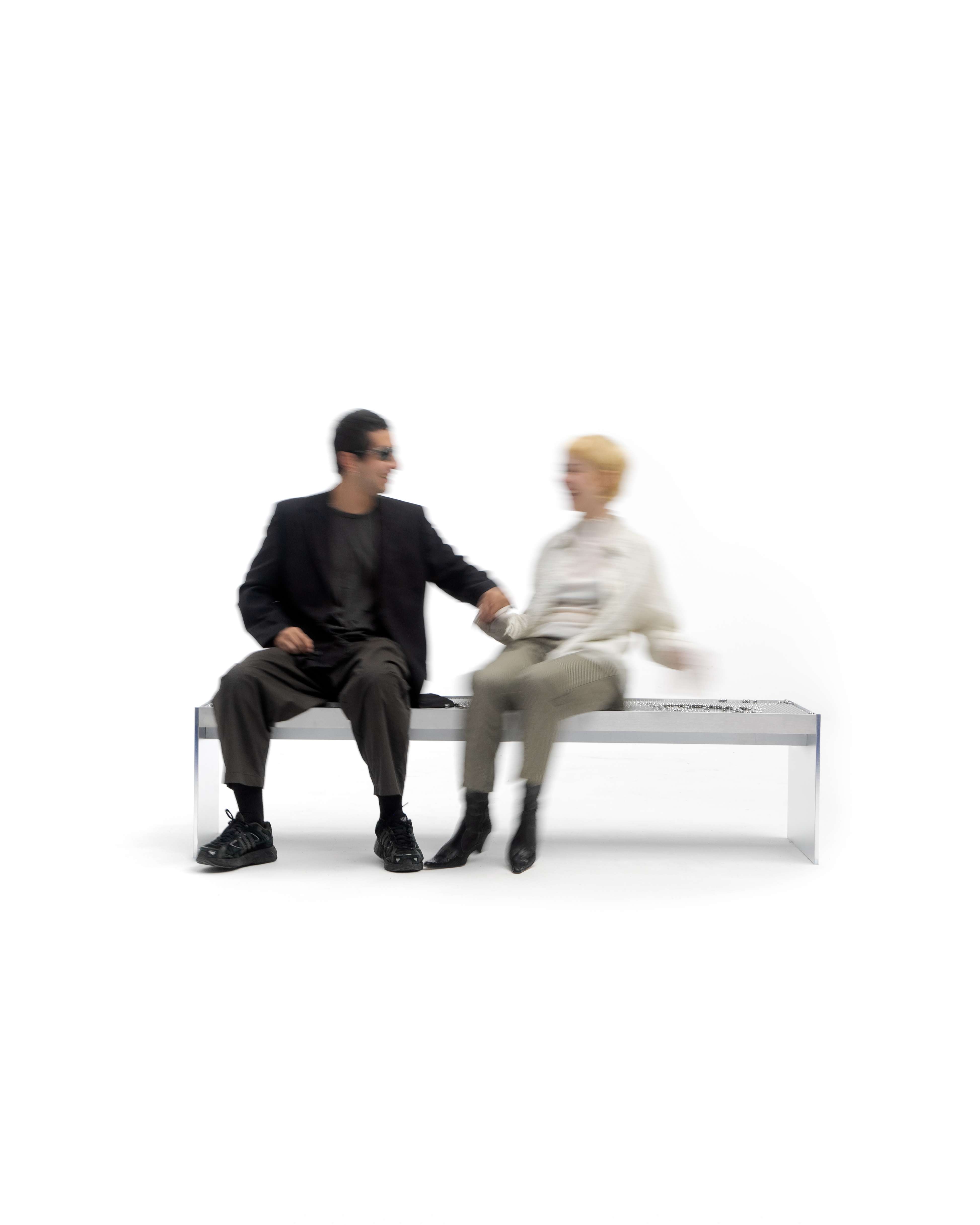



© Leonardo Garza
COLLECTIBLE In-Depth
GARZA Studio
October 2024
This series, COLLECTIBLE In-Depth, unveils the backstage of contemporary creation. Tackling various topics from personal designer processes to the position of collectible design on the global design market, COLLECTIBLE In-Depth offers different views to suit all tastes. Today we speak with Leonardo Garza of GARZA Studio.
C: Why did you focus your practice on collectible design rather than industrial design? How did you get into this type of design?
Leonardo Garza: I don’t think pinpointing my practice into collectible or industrial would be proper; I am interested in dangling between both, depending on the nature of the piece. As new commissions or inspiration for personal work appear, I allow the projects to inform me where they should exist.
My origins in design were substantially influenced by industrial designers such as Dieter Rams and Richard Sapper. Later, I dug into designers who were more inclined towards experimental, playful qualities, with more storytelling behind each piece, such as Shiro Kuramata, and that’s where the collectible part arrived.
C: How did working on a Tadao Ando project influence your practice?
LG: When I got involved in that project, I was only 21 years old and still studying for my architectural degree. It was the first architectural project I worked on full-time and was engaged in for over three years. My vision was still in early development, and I was immensely impacted by the level of order and attention to detail in the design and throughout the drafting and construction process.
That never left me and eventually spread throughout my work. In addition, being there allowed me to dream about the possibility of doing something different.
C: Can you talk about the new piece you released at COLLECTIBLE this year?
LG: The idea came after a breakup. At that moment, I was exploring the concept that nothing is static and that we are constantly moving. I wanted to see if I could use furniture design as a medium to express my feelings more similarly than in art.
The result is a bench on which a couple can adjust the distance between themselves by sliding their seats over bearing balls, giving a physical representation of the proximity fluctuations we experience during different phases of relationships.
The piece was inspired by and is a tribute to Nina Farkache's "Come a Little Bit Closer," produced by Droog Design.
C: How do you see this piece influencing your future work?
LG: Every new piece is an opportunity for evolution, and my process is always informed by the knowledge I have acquired from previous works.
Move a Little Bit Further expanded the palette in my design language by incorporating Kinetic and ASMR experience, with sound, touch, and movement as added features.
I see many possibilities within this new realm, and I am already exploring other furniture ideas that use these qualities.
C: Can you discuss a specific cultural or historical reference that has inspired your recent work in collectible design?
LG: The genocide happening in Palestine inspired me to design a limited-edition ashtray where all the profits were donated to a group providing direct emergency aid to the displaced and distressed families in Gaza.
For the ashtray design, I used the Dove of Peace silhouette conceptualized by famous Mexican architect Pedro Ramirez Vazquez in 1967. The shape was milled from a solid block of aluminum and finished with a fine polish.

© Leonardo Garza

© Leonardo Garza

© Leonardo Garza
COLLECTIBLE In-Depth
GARZA Studio
October 2024
This series, COLLECTIBLE In-Depth, unveils the backstage of contemporary creation. Tackling various topics from personal designer processes to the position of collectible design on the global design market, COLLECTIBLE In-Depth offers different views to suit all tastes. Today we speak with Leonardo Garza of GARZA Studio.
C: Why did you focus your practice on collectible design rather than industrial design? How did you get into this type of design?
Leonardo Garza: I don’t think pinpointing my practice into collectible or industrial would be proper; I am interested in dangling between both, depending on the nature of the piece. As new commissions or inspiration for personal work appear, I allow the projects to inform me where they should exist.
My origins in design were substantially influenced by industrial designers such as Dieter Rams and Richard Sapper. Later, I dug into designers who were more inclined towards experimental, playful qualities, with more storytelling behind each piece, such as Shiro Kuramata, and that’s where the collectible part arrived.
C: How did working on a Tadao Ando project influence your practice?
LG: When I got involved in that project, I was only 21 years old and still studying for my architectural degree. It was the first architectural project I worked on full-time and was engaged in for over three years. My vision was still in early development, and I was immensely impacted by the level of order and attention to detail in the design and throughout the drafting and construction process.
That never left me and eventually spread throughout my work. In addition, being there allowed me to dream about the possibility of doing something different.
C: Can you talk about the new piece you released at COLLECTIBLE this year?
LG: The idea came after a breakup. At that moment, I was exploring the concept that nothing is static and that we are constantly moving. I wanted to see if I could use furniture design as a medium to express my feelings more similarly than in art.
The result is a bench on which a couple can adjust the distance between themselves by sliding their seats over bearing balls, giving a physical representation of the proximity fluctuations we experience during different phases of relationships.
The piece was inspired by and is a tribute to Nina Farkache's "Come a Little Bit Closer," produced by Droog Design.
C: How do you see this piece influencing your future work?
LG: Every new piece is an opportunity for evolution, and my process is always informed by the knowledge I have acquired from previous works.
Move a Little Bit Further expanded the palette in my design language by incorporating Kinetic and ASMR experience, with sound, touch, and movement as added features.
I see many possibilities within this new realm, and I am already exploring other furniture ideas that use these qualities.
C: Can you discuss a specific cultural or historical reference that has inspired your recent work in collectible design?
LG: The genocide happening in Palestine inspired me to design a limited-edition ashtray where all the profits were donated to a group providing direct emergency aid to the displaced and distressed families in Gaza.
For the ashtray design, I used the Dove of Peace silhouette conceptualized by famous Mexican architect Pedro Ramirez Vazquez in 1967. The shape was milled from a solid block of aluminum and finished with a fine polish.

© Leonardo Garza

© Leonardo Garza
Contact
info@collectible.design
VIP PORTAL
EXHIBITOR PORTAL
PRIVACY POLICY
© 2025 Collectible
Contact
info@collectible.design
VIP PORTAL
EXHIBITOR PORTAL
PRIVACY POLICY
© 2025 Collectible